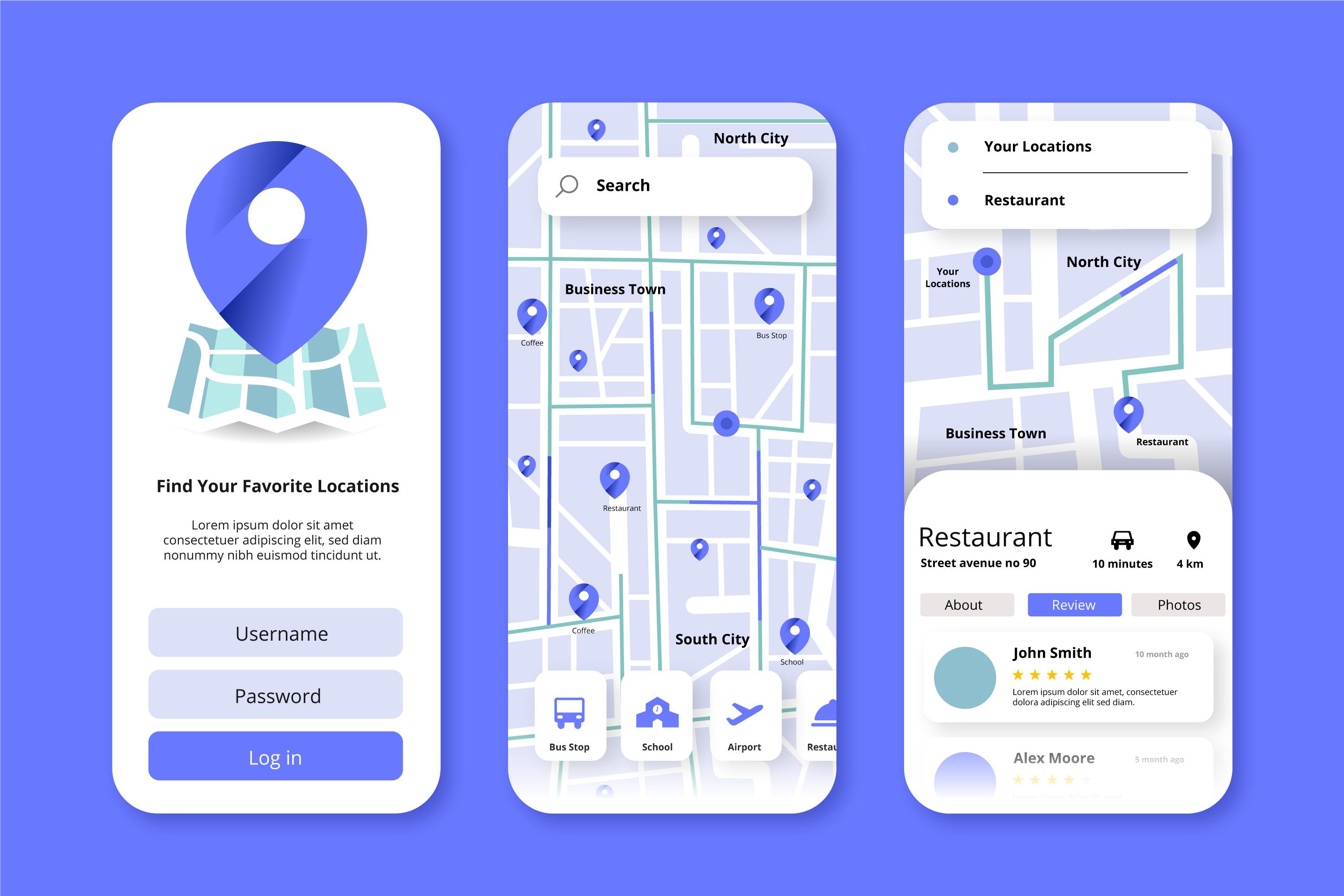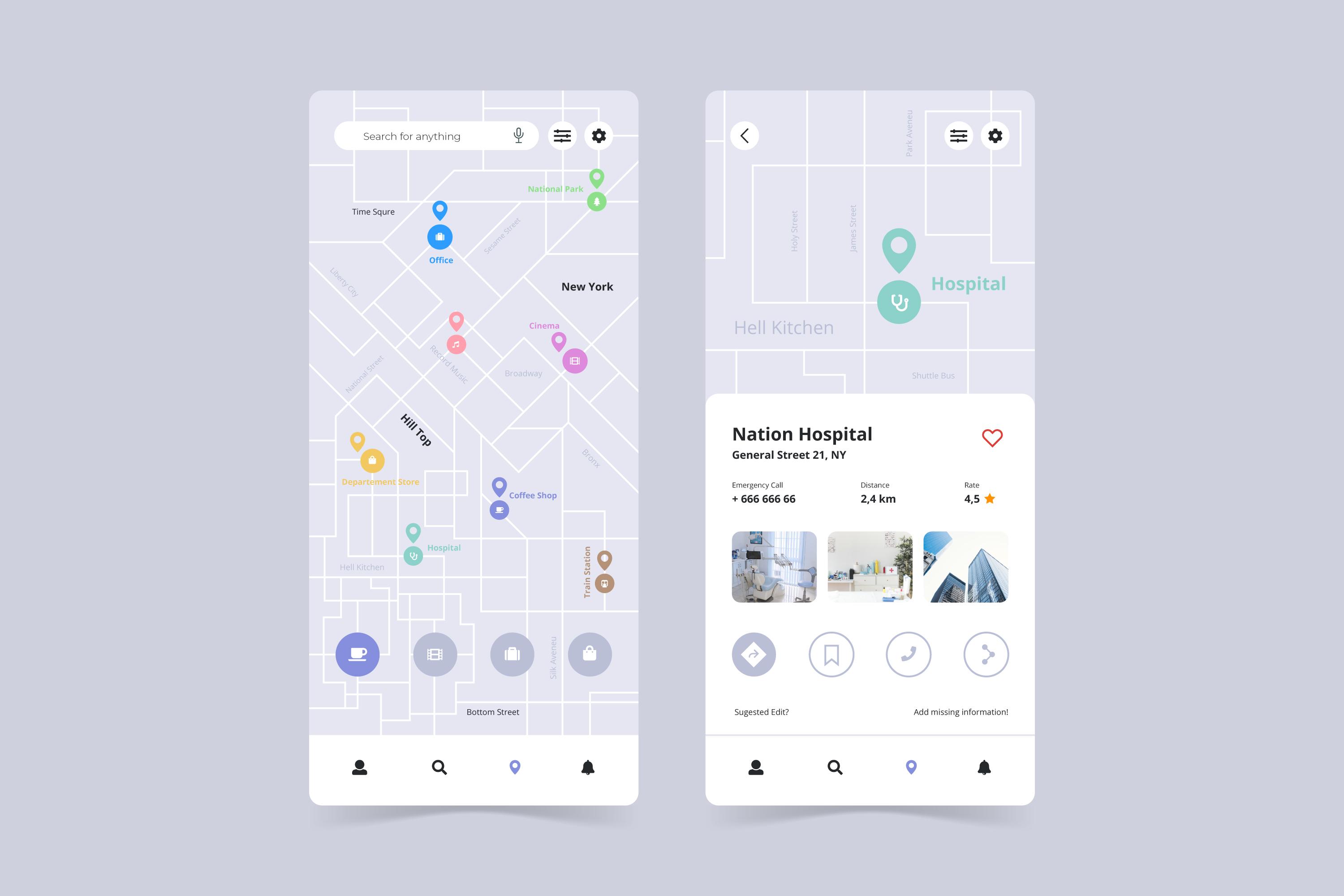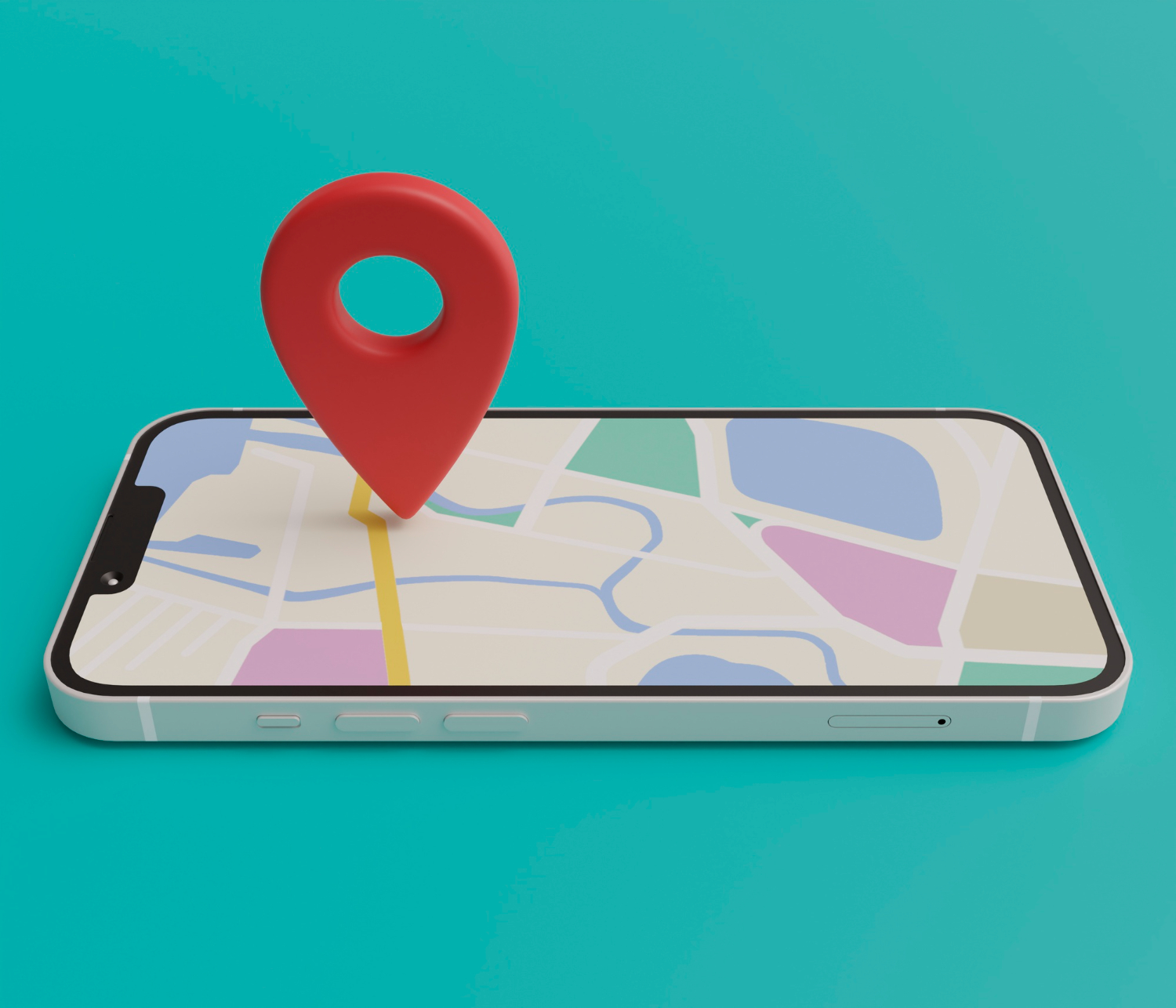Google Maps SEO helps local businesses appear higher when people search nearby. The essence is simple. It connects a shop or service with customers who are close and ready to visit. A profile with the correct name, address, phone, and business hours builds trust. Reviews matter too. People check them before choosing where to go. Photos of the place or products give a clear picture. Keywords in the description also help the business show up for the right searches. Local links and mentions add weight. Together, these steps make the business easier to find on the map.
Google favors accurate, active, and complete profiles. That is why local SEO maps are an important part of business success.

Importance of Google Maps SEO for Businesses
When people search online, many of them look for places close to where they are. Someone might type “coffee near me” or “shoe repair nearby.” If your business does not show up on Google Maps, you lose that customer before they even know you exist. Maps results often appear before regular website results. That makes them the first thing people see, and being there increases the chance they will visit.
The Role of Reviews and Trust
Numbers tell a story. According to SOCi, 87% of consumers read reviews before making a purchase. This means your presence on Google Maps is not just about showing up but also about showing proof that people trust you. A profile with many positive reviews attracts attention. On the other hand, a profile with no reviews or negative ones can stop a customer from visiting. Reviews work as a modern form of word of mouth, and they play a large role in decision-making.
Completed Profiles Bring More Visits
Google reports that 70% of consumers are more likely to visit businesses with fully completed profiles. That means having your address, phone number, working hours, website, and photos all updated. A half-empty profile looks inactive. A complete one shows care and signals reliability. Many businesses miss this step, thinking a basic listing is enough, but the difference is clear when you compare activity levels between completed and incomplete profiles.
Comparing Map Searches with Regular Web Searches
Map searches often show intent to act quickly. For example:
- A person searching on Google’s main results for “best restaurants in town” might just be doing research.
- A person searching in Maps for “pizza near me” is usually ready to buy now.
This shows the difference between long-term interest and immediate action. SEO for Google Maps connects you with the second type, the one more likely to walk into your shop today.
What Customers See First
When users open Google Maps, they do not see everything. They notice:
- Name of the business
- Star rating and number of reviews
- Distance from their location
- Open or closed status
- A few photos, if available
These elements decide if they click or move on. Optimizing each of them makes your profile stronger.
Impact on Local Competition
Even small local shops compete in the same space. Two stores on the same street might look the same from the outside, but if one appears first in Google Maps with good reviews, that store gets the foot traffic. SEO for Google Maps becomes a form of silent competition. Customers may never even notice the second store if the first one already meets their needs.
How Visibility Turns into Action
High ranking in Google Maps is not just about being seen. They also lead to actions: phone calls, route requests, and direct website visits. Each of these actions can lead to a sale. A high position with accurate information saves the customer effort. They do not need to search long or compare too much. This ease of access often tips the decision in your favor.
SEO for Google Maps is more than just another digital tool. It shapes how local customers find and choose businesses every day. For many businesses, success begins when they outsource SEO services, which helps them show up where people are already looking.

Tips to Boost Google Maps SEO
Local search depends on many small steps. A business that pays attention to its Google Maps profile stands out. Each detail adds weight. Below are practical tips that can help a business rank better and attract more visitors.
Claim and Verify Your Google Business Profile for Google Maps SEO
Before a business can appear strong on Google Maps, the first step is to claim the Google Business Profile. Many companies still skip this step or leave their profile unverified. Without it, updates cannot be controlled, and anyone could suggest edits that change how the business looks online. Claiming the profile secures ownership and allows the business to add correct details.
Verification is the next part. Google usually sends a postcard with a code to the business address. Sometimes, verification can happen by phone or email, but the postcard is the most common way. This step proves that the business is real and located where it says it is. Without verification, the profile may not appear in searches or could be hidden from customers.
Once verified, the profile opens up options. Business hours, photos, services, and categories can be added. Reviews can be managed. Updates can be posted. Verified profiles also rank higher on Google Maps because Google treats them as more trustworthy.
Many owners delay verification because the process feels slow. Waiting for a postcard may take up to two weeks. But the time is worth it. Once the code is entered, the profile gains full control, and no one outside the business can change the core details. A verified profile is the base of all Google Maps SEO efforts. Without it, every other step has less effect.
Keep Your Google Business Profile Complete for Better Google Maps SEO
A half-empty Google Business Profile leaves many questions unanswered. Customers want clear information before they decide to visit. If details are missing, they might choose another option without hesitation. A complete profile makes the business easier to trust and easier to find.
Filling out the profile goes beyond just name and address. Add working hours, phone number, website link, and services offered. Each piece of information helps Google understand what the business is about. When profiles are complete, they tend to rank higher on Google Maps, as Google prefers listings that look reliable and active.
Photos also count as part of completeness. They show the real face of the business. A shopfront photo helps people recognize the place from the street. Product or service photos make the choice easier. Customers often check these pictures before making a decision.
Here are the main parts to focus on:
- Business name, address, and phone
- Website and booking links if available
- Working hours, including holidays
- Photos of inside, outside, and main services
- Categories and attributes such as “pet friendly” or “parking available”
A full profile also improves how the business looks in search results. Instead of a plain listing, customers see more information at once. That saves them time and increases the chance they will take action.
Some owners fill in the basics and stop there. Others return often to update and improve ranking on Google Maps. The second approach pays off because it shows Google the profile is alive.

Write a Keyword-Focused Description for Google Maps SEO
The business description on a Google Business Profile is short, but it carries weight. It is one of the few places where you can explain in your own words what you do. A well-written description helps Google match your profile with the right searches. It also gives customers a fast sense of who you are.
Keywords should be used naturally. They should not look stuffed or forced. Think about the words people type when searching for your service. A bakery might use “fresh bread,” “wedding cakes,” or “local coffee shop.” A plumber may use “emergency plumbing” or “water heater repair.”
A clear description might include:
- What kind of service or product do you provide
- Where you operate or the area you serve
- What makes your business different
It does not have to be long. Around 750 characters is the maximum allowed. Still, shorter, precise text often works better.
When writing, avoid empty phrases. Focus on simple points that both people and Google understand.
Here is what to include:
- Primary keywords that reflect your main service
- Secondary keywords connected to special offers or unique features
- Location terms like “in downtown Chicago” or “serving the Bronx”
Descriptions that skip these elements often miss search traffic. Customers may not even find them when looking nearby. Keep the tone simple. Customers should read it quickly and know at once if the business fits their needs.
Add Professional Photos to Enhance Google Maps SEO
Photos are one of the first things customers see when they open a Google Maps listing. A profile without images looks empty and unfinished. People want to see where they are going before they arrive. Adding professional photos gives them a clear view and builds confidence.
Not every photo has to look staged. A mix works best. Show the outside of the shop so visitors can recognize it from the street. Add images of the inside space, staff, and products. These create a sense of real activity. Google also favors listings with more images, as it shows that the SEO of the Google Business profile is active.
Here are the main photo types to include:
- Exterior shots to help with directions
- Interior shots to give a sense of atmosphere
- Product or service images
- Staff photos to add a personal touch
Consistency matters too. Old pictures should not stay forever. Replacing them with fresh ones every few months keeps the profile alive. Customers notice the difference between a profile last updated three years ago and one with recent content.
Quality also plays a role. Blurry, dark images can harm the impression. A smartphone is enough if the photos are clear, bright, and steady. For some businesses, like restaurants or hotels, hiring a professional photographer can be worth the cost. Photos do not just sit on the profile. They also appear in search results. A strong cover photo can increase clicks compared to a listing with no image or a poor-quality shot.
Collect Reviews to Improve Google Maps SEO
Reviews play a direct role in how customers choose a business. They are also one of the signals Google uses to decide ranking in Google Maps. A listing with more reviews, and especially more positive ones, often appears higher than one with only a few. This makes reviews both a trust factor for people and a ranking factor for search.
Getting reviews is not automatic. Customers rarely leave feedback unless they are asked. A gentle request after a successful purchase or visit can make a difference. Some businesses add a reminder on receipts, others send a short follow-up email, while many simply ask in person. The key is to make it easy. A direct link to the review page removes extra steps.
Negative reviews may still appear, and they do not always harm if handled well. A calm, professional response shows that the business listens and cares. Many customers read not only the reviews but also the replies. A respectful answer can turn a bad comment into proof of good service.
Reviews also add fresh content to the profile. Each time someone writes about the business, Google sees new activity. This activity signals that the business is alive and interacting with customers. A profile without reviews looks static and less relevant.
The long-term effect of search optimization of maps is clear. With time, a strong flow of honest reviews builds a reputation. People checking the listing feel reassured, and Google rewards the constant activity with higher visibility.
Reply to Reviews Regularly for Stronger Google Maps SEO
Reviews are not a one-way street. Customers write them, but the business has the choice to respond. Replies give life to a Google Maps profile and show that the owner is active. Google also notices this interaction. A profile with regular replies often performs better in local search compared to one that stays silent.
A response does not need to be long. A few words are enough. Thanking a happy customer for their support can leave a positive impression. For critical reviews, short and respectful answers reduce harm. What matters is that the business is present in the conversation.
Benefits of replying include:
- Building trust with potential customers who read reviews before visiting
- Showing respect for feedback, whether positive or negative
- Signaling activity to Google’s system, which favors active profiles
Different review types call for different approaches:
- Positive reviews: thank the customer and keep it friendly
- Neutral reviews: acknowledge their experience and invite them to return
- Negative reviews: stay calm, avoid blame, and offer a way to fix the issue
Regular replies also create fresh content around the listing. Each comment exchange adds new text to the profile. Google values these updates, as they reflect ongoing engagement. Customers also notice how the business reacts, often judging the tone of the reply more than the review itself.
Some owners ignore this step, thinking reviews speak for themselves. In practice, silence looks careless. A business that answers - looks attentive and professional, even if mistakes sometimes happen.
Post Regularly on Google Business Listing for Google Maps SEO
Google Business posts work like small updates. They appear directly on the profile and give customers new reasons to pay attention. A profile with no updates can look abandoned. Adding posts now and then shows the business is alive.
Posts do not have to be long. Short text with a picture or a link is enough. They can announce changes in hours, seasonal sales, or upcoming events. Regular activity also helps with ranking, as Google prefers profiles that show movement.
Types of posts that often work well:
- Announcements of new products or services
- Limited offers or discounts
- Holiday greetings or special hours
- Photos from recent work or events
The content stays visible for a while but fades if not renewed. That is why it helps to add fresh posts at least once every few weeks. Even if the business is quiet, a short update about daily activity can fill the gap. Customers notice this too. When they open a profile and see recent posts, they feel more confident that the business is open and active. If the last post was years ago, doubt appears.
List Your Business on Other Directories to Support Google Maps SEO
Google Maps does not work in isolation. It looks at signals from across the web to confirm whether a business is real and consistent. When the same name, address, and phone appear on other trusted directories, it reinforces the credibility of the listing. This consistency helps rankings and makes the business easier to find.
Directories come in many forms. Some are broad, like Yelp or Yellow Pages. Others are industry-specific, such as platforms for restaurants, healthcare, or legal services. Being present in both types expands reach. Customers often discover businesses through these sites and then move to Google Maps for directions.
The key is accuracy. Small mistakes, like a missing suite number or an outdated phone number, can create confusion. If different sites display conflicting details, Google may hesitate to rank higher on Google Maps. Regular checks are needed to keep everything aligned.
There is also a trust element for the customer. When they see the same information repeated across multiple platforms, it builds confidence. They feel assured that the business is established and reliable.

Optimize Your Website for Local SEO to Aid Google Maps SEO
Google Maps SEO optimization does not stand alone. A business website supports the profile by giving Google more signals about location, services, and trust. When the website and profile share the same details, the effect is stronger. Customers also move from Maps to the website to learn more before making a decision.
Local SEO on a website starts with the basics. Every page should include the correct name, address, and phone number. This information should match exactly what is on the Google Business Profile. Even a small variation, like “St.” instead of “Street,” can weaken consistency.
Content matters too. A site with location-specific pages performs better for nearby searches. Key elements to add:
- Clear name, address, and phone on every page
- A contact page with SEO for a local map and directions
- Local keywords that describe the service and city
Extra steps that improve results:
- Fast loading pages, since slow sites lose visitors
- Mobile-friendly design, as many searches happen on phones
- Schema markup to help Google read business details
Google Maps optimization is not only about ranking. It also gives customers confidence. When they see a well-structured site with clear local references, they trust the business more.
Build Local Backlinks to Strengthen Google Maps SEO
Backlinks are links from other websites that point to your business site. For Google Maps SEO, local backlinks carry even more weight. They show that other trusted sources in the same area recognize the business. This helps Google confirm both relevance and location.
Local backlinks can come from many places. A city news site may mention your shop in an article. A community blog might list your service. Sponsoring a local event often leads to a link on the organizer’s page. These small mentions add up, creating stronger signals for both Maps and regular search.
Ways to earn local backlinks:
- Join city business directories or chambers of commerce
- Collaborate with local bloggers or small media outlets
- Offer promotions with nearby businesses that link back
- Take part in community events that share online coverage
The quality of the link is more important than quantity. A single link from a respected local site often helps more than dozens of weak ones.
Back to the top
The answers to your questions
Key Factors Affecting Google Maps SEO Rankings
Rankings depend on profile completeness, accuracy of business info, reviews, photos, and local links. Activity on the profile also plays a role.
How Reviews Influence Google Maps SEO
More reviews and higher ratings help a business appear stronger. Replies to reviews also show activity, which supports ranking.
Impact of Photos on Google Business Profile for Google Maps SEO
Photos give customers a clear view and increase clicks. Google also favors profiles that upload fresh, good-quality images.
Tracking Your Google Maps SEO Performance
Use the insights section in Google Business Profile. It shows searches, calls, direction requests, and other actions that reveal how people find and use the listing.


